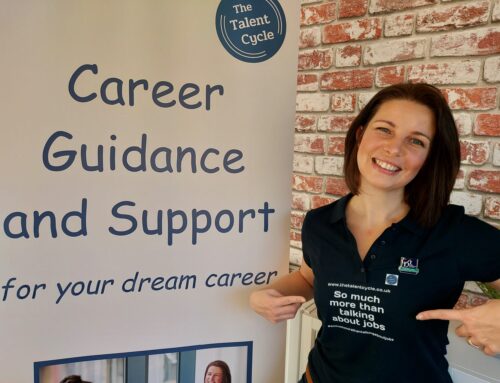One of the most time-consuming aspects of being a careers leader (if done well) is ensuring that there is a sufficient flow of employer and HE/FE engagements taking place in your school. As if that wasn’t difficult enough you need to make sure they are meaningful and of good quality, on top of ensuring every child receives at least one engagement each year of their secondary career. Phew, there aren’t enough hours in the day!
To be frank, the initial effort in putting together a network of employer/HE/FE contacts is huge, but it pays off in the long run and becomes less onerous as time goes on. Here are my tips, gleaned from many years delivering CEIAG in schools.

The first thing to remember is that businesses have no obligation to support your school in getting pupils employable or to meet the Gatsby Benchmarks, so they need to have a reason to help you. Sometimes this will be an emotional reason, such as they went to your school, or they want to support specific causes such as women in STEM. Alternatively, it could be rooted in business needs such as feeding their talent pipeline or to fulfill their corporate social responsibility – to be seen as a good company by ‘giving back’ to the community. This being a given, you’re ready to move on to step 1.
Step 1: What do you need?
What are the needs of your pupils? Do you have a glut of budding architects? Or is your science department keen to work on developing a unit of work in tandem with a local science-based business? Defining your needs is the first step – turn these needs into a learning objective before moving on to consider step 2.
Step 2: Finding employers
Your Careers and Enterprise Company Enterprise Adviser should be a huge help here as will Local Enterprise Partnerships (LEPs) or Career Hub if you are part of one. Alternatively, if you don’t have access to any of those you might look towards your local Chambers of Commerce and similar organisations. Got a list? Great, you’re ready for step 3.
Step 3 – What do you want the employers to do?
How do you want the employers involved? The little diagram below details some of the most common but you may have other ideas. Just because nobody else has tried something, doesn’t mean you shouldn’t. Skype conferences for instance – if you have the tech (and most schools have) why not connect with employers out of your local area?

Things to consider here are timings, location and cost. Be flexible -just because it’s most convenient for your school to hold a networking event during the lunch break doesn’t mean that it works for businesses. Consider getting up earlier and combining a business breakfast in tandem with the school breakfast club. One of the major barriers between businesses and schools is the different timings of the day and the difference in the way each work. For instance, a business wouldn’t need to fill in a 27-page form (ok, I might be exaggerating a little), do a risk assessment and get it signed off by a senior manager and the school calendar keeper. Explain your problems and seek the employer’s help in finding a way forward.
Step 4 – Making contact – the most time-hungry part of the process
This is often the most difficult part – do some research, find out what the company do and then find a named contact (LinkedIn is good for this). Even if they are the wrong person, you’ll find they often will pass you on to the correct contact.
Keep contact precise and to the point. Let them know exactly what you want/need, and they’ll be more liable to respond. A nebulous email asking them to be involved in employer engagement events at an unspecified time or place will usually be ignored.
Sample employer engagement letters/emails can be found here.
Step 5 – Agreeing objectives
Once you have a reply in your inbox, it’s important to allocate time for a phone or Skype conversation to discuss the event: the general who, what, where and when. After this, email them to confirm what has been agreed.
Step 6a – Keep contact going
Don’t just ignore them until the date and wonder why they’ve not turned up. Send them an email a week or so beforehand saying you’re looking forward to seeing them and to confirm date, time, location and any other important info such as parking arrangements. You should also:
- make sure you keep the employer in the loop about the type of location (classroom, hall etc.)
- make sure they understand that they won’t be left alone with pupils, which is often a key worry
- explain why you need to go through a safeguarding process
- provide the employer with a list of topics that pupils might ask about to help them feel prepared
- make sure that you provide an emergency contact number, that way if the employer hits a problem on the day they can get in touch. We all know how difficult it is to get through the school switchboard first thing in the morning!
Step 6b – Prepare students
Prepare students by advertising the event if it’s an open one such as a careers café. Ensure they know the purpose of the event. E.g. Our mock interview day is to help you to be ready to face your first interview. If it’s an assembly this step probably won’t be needed. However, if it’s a workshop or a careers fair you might want to provide prompt sheets of questions to ask and expected behaviour such as making eye contact and shaking hands.
Step 7 – THE BIG DAY
Relax and enjoy it, you’ve done your best to ensure nothing goes wrong.
Step 8 – After the event
Email and thank them. Feedback nice reviews and ask if they’d be prepared to take part in other activities in the future. This way you have a database of employers you can call on which cuts out the enormous chunk of work at steps 2 and 4 and allows you to concentrate on planning events with employers who you know and who know you.
Optional stage
Keep in touch with the employers, send them update emails or Christmas cards, or invite them to the school fete. You could even offer to host networking events that allow businesses that work with your school to network and make useful contacts. Most of this can be automated with a mailing list and a single email, but pays huge dividends in terms of having a ready-made pool of willing supporters of employer and HE/FE engagements.
Finally, what does this look like in reality? Have a look at the resource below which I designed for National Careers Week; it may well help you make more sense of the process.
Janet is a teacher with over 15 years experience providing award winning careers education and 25 successful years teaching business studies in schools and colleges throughout London. She adopted her tongue-in-cheek Twitter name, @CareersDefender, after a particularly hard time convincing her school’s Senior Leadership Team of the value of careers education; something she passionately believes in.





